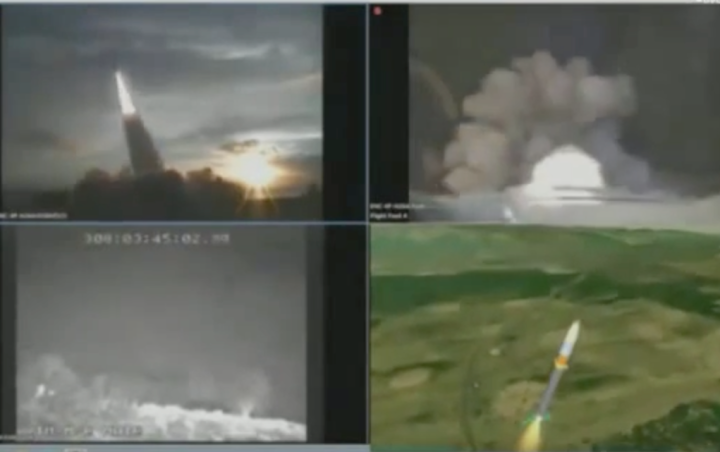
The rocket, which was meant to be launched over two years ago but suffered multiple technical delays, finally seemed set for blast-off on Tuesday evening. Carrying 13 small cube satellites, the U.S. Air Force seemed to have high hopes for the project. But alas, all quickly went astray. An official statement from the Air Force reads, “The ORS-4 mission on an experimental Super Strypi launch vehicle failed in mid-flight after liftoff at 5:45 p.m. Hawaii Standard Time (7:45 p.m. PST/10:45 p.m. EST) today from the Pacific Missile Range Facility off Barking Sands, Kauai, Hawaii.”
A combined effort of Sandia National Laboratories, Aerojet Rocketdyne, and the University of Hawaii, the Super Strypi (aka the Spaceborne Payloads Assist Rocket Kauai, or SPARK) is meant to revolutionize satellite launches by offering a super low-cost and short-notice method of getting small payloads in to space. Without any built-in guidance and depending instead of a 135-foot long rail launcher and what is supposed to be spin-stabilized flight, the system, in theory, gets the job done. Already, over $35 million in government dollars has gone towards research for the project, and if it works, the Super Strypi is meant to cost just $15 to $16 million per flight, which may sound like a lot, but is still significantly less than current costs for similar deliveries.
The problem, of course, is that we haven’t quite gotten it to work yet.
But “despite the vehicle issue, the project is still a tremendous success,” says the University of Hawaii. “About 150 students worked on the payload, a hyperspectral imager called HiakaSat. All milestones for the payload were met and the students received real-world aerospace experience in building a sophisticated satellite,” the university added. “Because of this project, there is now a rocket launch pad and rail launcher in place at Pacific Missle Range Facility and those assets performed well today.”
So keep looking on the bright side, folks. It could always be worse.


